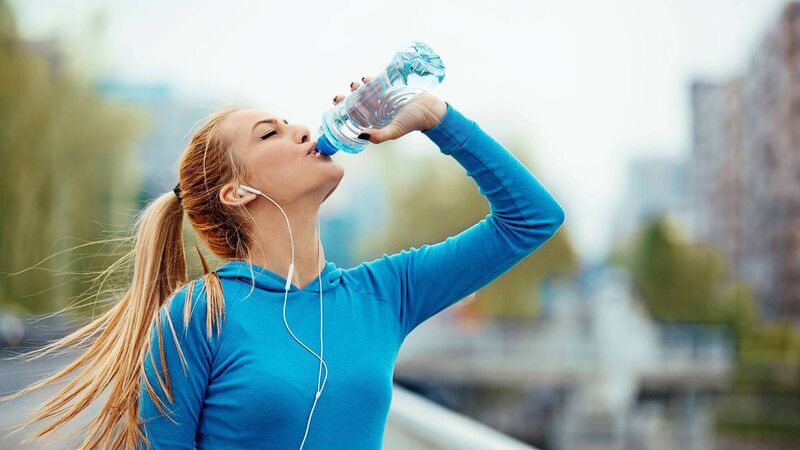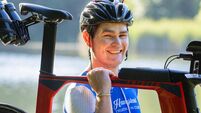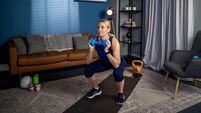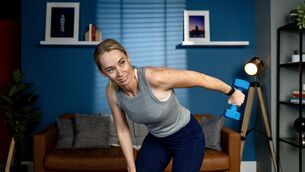Tips to keep in mind before lacing up your trainers for a run

Personal trainer Sarah Campus: “Dry mouth, dry lips, headache, dizziness, dark yellow urine, muscle cramps, and a fast heartbeat are all warning signs to look out for."
Exercising beneath the bright, clear blue skies brings benefits: Fresh air, time in nature, and a healthy dose of vitamin D.
However, before diving into an outdoor workout this summer, it’s important to consider a few safety precautions.
While sunshine can lift our spirits, exercising in the heat can also pose risks, such as dehydration and heat exhaustion, particularly for those new to outdoor workouts or in older age groups.
To help you stay safe while staying active, we spoke with fitness experts who shared their top tips for exercising safely outdoors this summer.
“A lot of people jump straight in to workouts in the summer without acclimatising — this is a mistake,” says personal trainer Michael Betts. “Our bodies generally need one to two weeks to adapt to exercising in the heat.
“Older adults need extra time for acclimatisation, because ageing affects your body’s ability to regulate temperature. Your sweat response becomes less efficient, and your cardiovascular system may not adapt as quickly to heat stress.
“Start with shorter sessions that are less intense and gradually build up your tolerance.”
“Sunscreen with SPF30 or higher should be applied 30 minutes before going outside,” advises Betts. “Reapply every two hours or more frequently if you’re sweating heavily.
“Don’t forget often-missed areas, like the tops of your ears, feet, and the back of your neck.”
“Early morning, between 6am and 8am, offers the coolest temperatures and lowest UV exposure,” says Betts. “Your core body temperature is naturally lower when you wake up, giving you an advantage for temperature regulation.”
He also recommends avoiding exercising between 10am and 4pm, if possible, as this is when temperatures peak and the UV rays are at their strongest.
“This window is particularly dangerous for older adults, whose bodies take longer to recover from heat stress,” says Betts. “If you must exercise during these hours, seek shade and reduce intensity significantly.”
“Exercising in the heat causes your body to sweat, which is a way of regulating your body temperature, helping your body to cool down, but without enough water your body could overheat or even experience heat stroke,” warns personal trainer Sarah Campus. “Staying hydrated supports mental sharpness, and supports body and muscular function, allowing for increased flexibility and mobility.
“Also, hydration is important for your heart, as, without enough water, you could feel faint or dizzy.”
“Dry mouth, dry lips, headache, dizziness, dark yellow urine, muscle cramps, and a fast heartbeat are all warning signs to look out for,” says Campus.
“Your skin’s ability to regulate temperature decreases with age, making proper clothing choices even more critical,” says Betts. “Cotton holds sweat against your skin, instead of wicking it away, which prevents your body from cooling effectively.
“Instead, opt for loose-fitting, light-coloured clothes, which will reflect the heat and allow air to circulate around your body. Synthetic materials, like polyester blends or merino wool, work well for moisture management. These fabrics dry quickly and help sweat evaporate, which cools your skin. Some modern fabrics even have built-in UV protection.”
“Hats with wide brims will protect your face, ears, and neck from the sun, while giving a bit of shade, helping keep your head cool,” says Betts. “Hats with mesh panels or ventilation holes will help prevent heat building up.
“A hat with a neck flap offers additional protection for this vulnerable area.”
“Exercising in shaded areas or with frequent rest periods are smart choices,” says Betts. “Circuit training, where you move between shaded stations, works well.
“Body weight exercises under trees or covered pavilions let you strength train without direct sun exposure.”
“Low to moderate intensity activities work better than high-intensity training in hot weather,” says Betts. “Walking, gentle cycling, tai chi, and yoga generate less internal heat than running or intense interval training.
“These activities allow your body to maintain its cooling mechanisms more effectively.”
“Move in to a cool, shaded area to cool down and stretch,” says Campus. “Do some light walking and deep breathing, as this helps bring
your heart rate down gradually. You can also apply a cold compress to your wrists and the back of your neck to cool you down quicker.”

Celebrating 25 years of health and wellbeing











